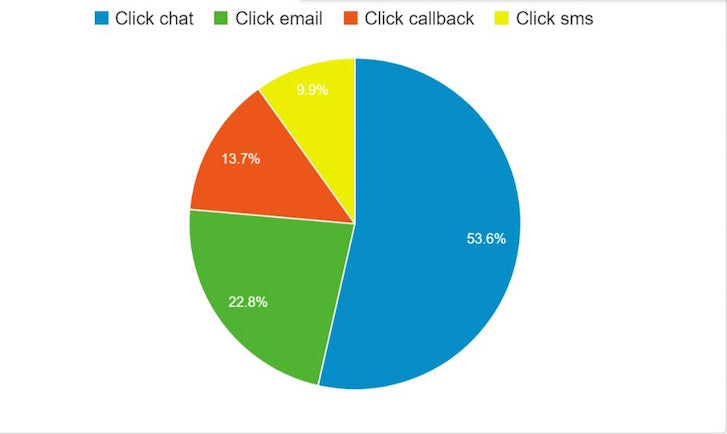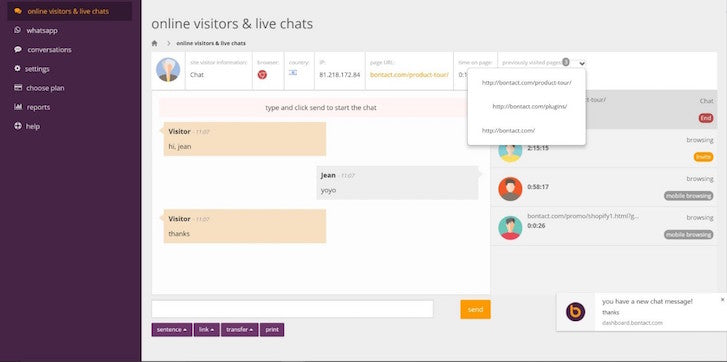What makes the difference between an okay ecommerce developer and a great one?
Since platforms like Shopify include most of the functionality needed to build an excellent ecommerce site, it’s easy for developers to focus all their energy on specs and front-end design. And while building a decent-looking site that satisfies a client's expectations is great, it's really the bare minimum you should strive to deliver.
To really stand out, you want to delight your clients. The best way to do that is to look at things from their perspective. You need to remind yourself that your clients aren't just running a website — they’re running a business. As a developer, your final product should not only look beautiful, but it should also offer them functionality that makes their business run more efficiently.
Below are two key areas that can help you add to a client’s bottom line and help differentiate yourself as a great ecommerce developer. Because if you focus on helping your clients build a successful business, you'll become more successful yourself.
You might also like: 3 Strategies for Improving User Experience in Your Ecommerce Designs
1. Robust Merchant-Customer Communication Channels
Every online business pays to acquire visitors, often through the time and budget invested to conduct keyword research, deploy paid search campaigns, or create pay-per-click advertising. A small increase in the total number of site visitors can typically result in a larger percentage of visitors completing a transaction — and this can be huge for a business’s bottom line.
But you don’t have control over most of the factors that influence conversion rates. You can’t manage the client’s inventory, their pay-per-click campaigns, or the success of their SEO initiatives (unless you are working in an agency that does these things along with development).
So how can you build a Shopify website that facilitates high conversion rates? It turns out that as a developer, you can influence a huge piece of the conversion funnel: contact options and customer relations strategies.
In many ways, an online business is very similar to a brick and mortar store. In both, the buyer’s journey involves awareness, consideration, and a decision.
Take a shoe store for example. Some customers walk in already in the decision phase. They know exactly what they want: brand, model, size, and color. They are only looking for the lowest price. If you have it, great — you’ve got a sale. If not, you don’t.

Other customers are in the awareness stage. They are looking around, killing time, and gathering information. There is nothing your client can do to sell them in that stage, and not much you can do to help out, other than building a beautiful and smoothly-functioning website to increase the chances of them leaving their email and coming back later.
Others are in the consideration phase, or browsing. These visitors know they might want to buy some shoes, but they don’t know which brand they want, or which color, or if they really want to buy now or wait for the next pay cheque. They've come to your store to gather details that will help them make an informed purchasing decision, which often translates to them interacting with a sales rep. We've seen a similar pattern on ecommerce sites, and where approximately 5% of visitors reach out to the store owner with a question.
If you go into a shoe store and have a question, how long will you wait for an answer? Most people will stand around for a few minutes and then leave. It’s the same for an ecommerce website. Many visitors will not wait 12-24 hours to get a response to their emailed questions. They will bounce, and the money your client paid to bring them to their site will have been wasted.
This is where you can help! By building real-time contact beyond a generic email form can maximize the chances that your client’s visitors can get the answer to their questions instantly. This small structural change in how your client interacts with their customers can make a big difference and help influence more buying decisions on the spot.
How do we know that? I looked up our client data. In our recent survey, 14% of users who have questions prefer to be called back, 10% prefer to communicate by SMS, and less than a quarter choose email. But the biggest insight we discovered is that the majority of users prefer instant communication.

The most common real-time ecommerce contact channel is chat. There are some great chat apps in the Shopify App Store, including Tidio and Zopim. There are also automated chat applications like Botego that help storeowners respond to their customers automatically when they are away from the computer.
Chat alone might not be enough, however. In some markets, almost half of ecommerce purchases are made on mobile devices. Customers spend more time shopping from their mobile devices than from their desktops, yet conversion rates on smartphones are much lower than on desktops and tablets. And considering our survey showed that almost 25% of customers prefer to use smartphone-specific forms of communication (SMS and callback), a huge opportunity exists for developers to integrate this channel of merchant-to-customer communication.
2. Intuitive and Relevant Analytics
The second way you can add value as a developer is by implementing analytics that will help your clients make smart business decisions. This one seems obvious. Every ecommerce business needs analytics to understand and classify its clients: who they are, where they came from, how much they bought, how likely they are to come back, and more. The store owner needs this information on a daily basis to make informed decisions — what to sell and for how much, where to acquire customers, what message to present to them, how much to pay for each new prospect, and so on.
Of course, Google Analytics is a minimum requirement. Shopify’s Beginners Guide to Google Analytics tells you how to set it up, and this introduction to Google Analytics for ecommerce goes into detail on how to use it. But if your client isn't familiar with it, Google Analytics can be overwhelming. It’s complicated to pull the right information to make relevant decisions. If you can set up an easy analytical interface for your clients out of the box, they will be very grateful, since this will free up their time to focus on running their core business.
There are dozens of analytics apps available in the Shopify App Store that address this gap. Actionable Google Analytics helps users manage Google Analytics more easily, with an ecommerce focus. Hits Analytics focuses on pulling the right information, presenting it in an intuitive interface, and integrating it with automatic ad creation. There’s even Eos Weather Analytics, which solely exists to tell you how the weather affects your customers’ buying decisions!
Another aspect of analytics that can be beneficial for your clients revolves around individual customer insights. Heat mapping allows store owners to see what visitors are looking at in aggregate, and recordings let you watch each customer’s journey through the store as it unfolds. Hotjar gives you both for free, and is a tool that no ecommerce store owner should be without.
All of these apps share one thing in common: they’re backward-looking. They can give you information about past visitors and customers, which you can use to better acquire and serve future ones.

But what about real-time analytics? One solution is Bontact, an app that provides store owners real-time information about who is on their site. The store owner can see which city customers are in, which device they are using to browse (smartphone, tablet or PC,) how long they’ve been in the store, and which pages they’ve looked at. The store owner can then use this information to reach out to the customer through the widget, and provide information the customer needs to make a buying decision in real-time.
As a Shopify developer, providing customers with a working and decent-looking store is only the beginning. A really outstanding developer makes sure to include features in the website that will set his customer up for business success. Two such features are rapid communication capability, and intuitive and relevant analytics. By building the website so that it maximally supports the customer’s business success, you increase the odds that they will recommend your services to others and keep coming back with more work.
Good luck!
Read more
- 5 Easy-to-Implement Website Maintenance Tips for Your Client's Ecommerce Business
- Free Webinar] Getting Started with Sass and Shopify
- How Google’s AMP Project is Changing the Mobile Web
- Getting the Most Out of Chrome Developer Tools: 4 Modern Features You Need to Know
- What is Markdown Syntax?
- A Modern Approach to CSS Pt. 2: Building Resources
- How to Use JavaScript to Add Ecommerce to Any Website
You might also like: 5 Simple Google Analytics Reports You Should Create for Every Client

